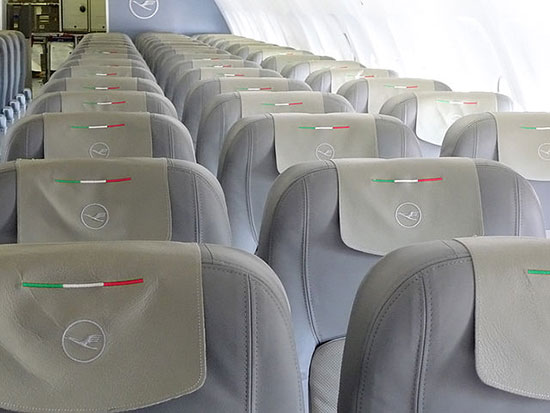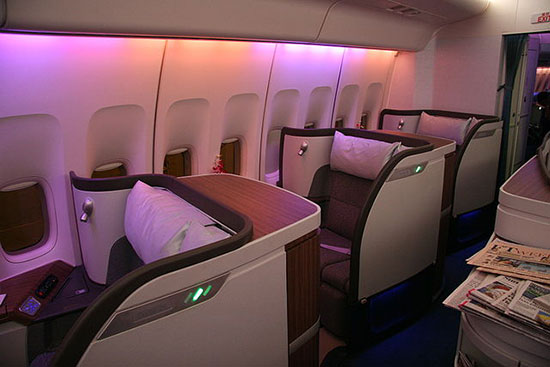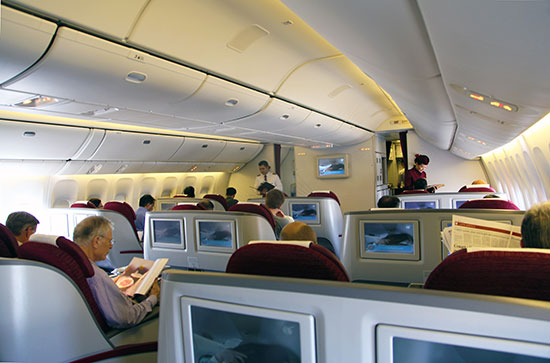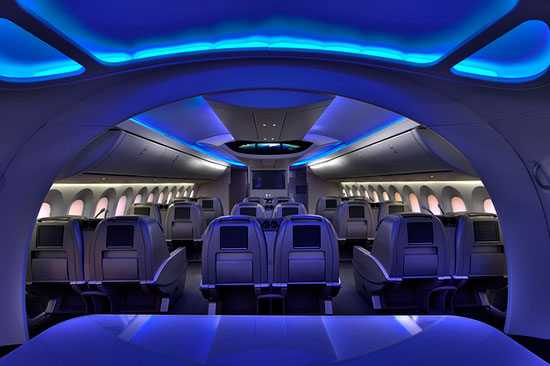Commercial Airline Seats
by Andrew Boyd
Today, airline seat prices. The University of Houston's College of Engineering presents this series about the machines that make our civilization run, and the people whose ingenuity created them.
When we discuss the price of an airline seat we usually mean the cost of a ticket. In point of fact, airlines use some remarkably sophisticated math to dynamically engineer their prices. But today, let's take a slightly different look at seat price. Let's look at the price, and engineering, of the actual seat.
Above all, airplane seats must above all be designed to keep us secure and safe. After that, economic considerations kick in. The less space a seat takes, the more seats fit on the plane, and the more revenue that's generated. Much as we hate to be packed in like tiles on a scrabble board, airlines have concluded we hate higher fares even more. So there's economic incentive to squeeze rows of cheap seats closer and closer together.

View into the cabin of a Lufthansa Italia aircraft. [Wikipedia/Felix Gottwald]
It may seem that this can only come at the cost of less leg room, but that's not entirely correct. Legroom can be preserved if seatbacks are made thinner. To achieve this, engineers are faced with problems ranging from maintaining seat strength to keeping the seat comfortable with less padding. Aluminum, carbon composites, and even titanium are now finding their way into seats. So is mesh seat cushioning. The result is that even a lowly coach class seat costs many thousands of dollars.
Things get even more expensive when we look at international first and business class seats. The economics are a bit different in these posh compartments, where for four times the coach fare you get three times the space. With passengers paying higher fares, a more lavish seat's in order.
First and business class seats also provide airlines an opportunity to differentiate themselves. Before unveiling its latest generation of business class seats, Lufthansa German Airlines engaged in a five year, secret design project. Designers scrutinized every inch and ounce of the seats, seeking the perfect balance between cost and comfort. Manufacturers claim that every pound shaved from a plane's weight translates to $400 in annual fuel savings. Fuel is the single largest expense faced by airlines, making up about one-third of a carrier's budget. So anything that reduces fuel consumption is warmly greeted by executives.

Cathay Pacific First Class [Wikipedia/Richard Moross]

Business Class cabin on Qatar Airways Boeing 777. Photo by John Lienhard
Today, business class seats range from 30 to 80 thousand dollars each — more than most of us spend on a car. But that's peanuts and a soft drink when compared with the cost of manufacturing first class seats which, with all the bells and whistles, range from a quarter to a half million dollars — more than most of us spend on a home. Of course, if an airline can rent that half million dollar seat for ten thousand a day, it can recoup its investment in just a couple of months.

Boeing first class [flickr/John Pozadzides]
Me? I think I'll take a seat in the back and a good book to keep me company, resting in the comfort of knowing I can keep making payments on my mortgage.
I'm Andy Boyd at the University of Houston, where we're interested in the way inventive minds work.
(Theme music)
Notes and references:
J. Mouawad. The Race to Build a Better Business Class. New York Times. August 23, 2013. See also: https://www.nytimes.com/2013/08/04/business/the-race-to-build-a-better-business-class.html?_r=0. Accessed November 12, 2013.
This episode first aired on November 14, 2013.